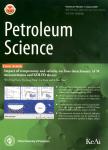版权所有:内蒙古大学图书馆 技术提供:维普资讯• 智图
内蒙古自治区呼和浩特市赛罕区大学西街235号 邮编: 010021

作者机构:Department of Control Science and Engineering School of Automation Engineering University of Electronic Science and Technology of China Sichuan Chengdu611731 China China National Logging Corporation Shaanxi Xi'an710077 China China Oilfield Services Limited Hebei Sanhe065201 China
出 版 物:《Petroleum Science》 (Petrol. Sci.)
年 卷 期:2025年
核心收录:
摘 要:With the increasing demand for oil exploration and subsurface resource development, density imaging plays an increasingly important role in identifying thin layers. However, conventional density imaging tools are limited by poor vertical resolution and therefore suffer from errors in accurately estimating the thickness and relative dip angle of thin layers. This affects the accurate evaluation of thin layer oil and gas reserves. To address this issue, this study evaluates the feasibility of employing novel methods based on advanced tool design. First, an electronically controllable X-ray source is selected to replace the traditional Cs-137 source, aiming to improve the tool s vertical resolution while reducing the radioactive risks commonly associated with chemical sources. Simulation results show that the X-ray tool provides sufficient depth of investigation with better vertical resolution while maintaining the same level of measurement sensitivity. Once the tool design is established, Fisher s optimal segmentation method is improved to enhance the estimation of thin layer thickness and relative dip angle. This is completed by transforming identifying thin layer interface into a mathematical clustering problem. The thin layer interface is fitted using the nonlinear least squares method, which enables the calculation of its parameters. The results demonstrate a 38.5% reduction in RMSE (root mean square error) for thin layer thickness and a 33.7% reduction in RMSE for relative dip angle, demonstrating the superior performance of enhanced X-ray tool in thin layer identification. This study provides a new perspective on the design of density imaging tools and assessment of thin layer, which can help in future thin layer hydrocarbon reserves evaluation and development decisions. © 2025 The Authors